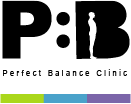In our increasingly digital world, neck pain and headaches have become all too common. If you’ve been experiencing these symptoms frequently, you may be dealing with a condition known as forward head posture. This article will delve deeper into this prevalent issue and provide practical solutions to help you alleviate discomfort and improve your posture.
Understanding Forward Head Posture
The widespread occurrence of forward head posture, largely attributed to our extensive phone and screen usage, should not be disregarded. Swift intervention is crucial, as this condition can lead to enduring health problems. It manifests as the forward protrusion of the head, disrupting its neutral alignment with the spine and placing undue burden on the muscles of the neck and shoulders.
In the early stages, you might notice poor shoulder mobility and rounded shoulders, a result of constantly looking down at our phones or leaning forward towards screens. If left unaddressed, these issues can escalate over time, leading to more severe conditions such as arthritis, and bulging or herniated discs.
Interventions and Solutions
There are several effective interventions to improve forward head posture. Massage therapy, for instance, can help relieve the tension in the muscles connecting to the front of our neck. The use of kinesiology tape is another effective method to improve our posture by providing support and increasing awareness of our body alignment.
Moreover, simple lifestyle changes can make a significant difference. The most basic guidance is to punctuate your phone or computer usage with frequent breaks. By doing so, not only do you give your eyes a chance to recuperate, but you also facilitate relaxation in your neck and shoulders, reducing the strain that arises from prolonged periods of maintaining a singular posture.
Exercises for Improvement
Furthermore, integrating specific exercises into your daily routine can assist in mitigating the potential complications linked to forward head posture. These exercises have the objective of strengthening and elongating the muscles impacted by this condition, thereby encouraging a more balanced and healthier posture.
For instance, chin tucks are a simple yet effective exercise. Assume a stance where your upper back is in contact with a wall, gently draw your chin inward, and sustain this position for a few seconds before reverting to the starting point. Engage in this routine several times a day to promote the elongation of the muscles in your upper neck.
Chest stretches are another beneficial exercise. Stand upright, interlace your fingers behind your back with your palms facing up, and draw your shoulders back and down. This stretch can help counteract the hunched posture often associated with forward head posture.
Conclusion
While forward head posture is prevalent in our contemporary society, it is not an inevitability that we must tolerate. By comprehending the causes and consequences of this condition and implementing proactive measures like frequent breaks, massage therapy, and daily exercises, we can enhance our posture and overall well-being. Remember, it is never too late to initiate positive transformations in your posture.
For more information about posture
This article was written by our team of specialist therapists at Perfect Balance Clinic. If you would like more specific advice about how our team can help you with this condition or symptoms you may be having, please complete the contact form below and one of the team will get back to you shortly.






